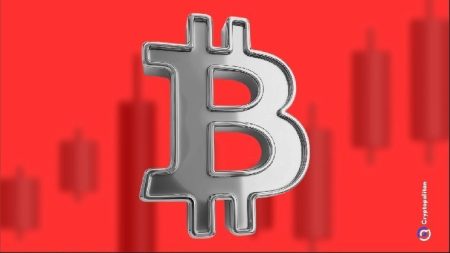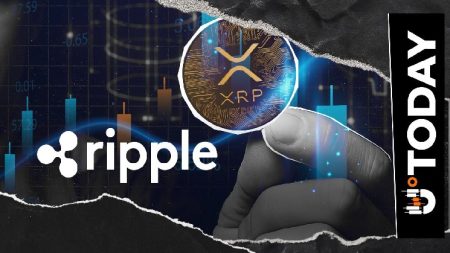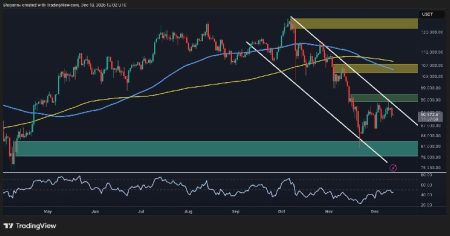The DeFi Revolution: How Decentralized Exchanges Are Redefining Financial Markets
In a financial landscape constantly reshaped by technological innovation, decentralized exchanges (DEXs) are emerging as potentially transformative forces that could fundamentally alter our relationship with money and markets. Much like Robinhood’s commission-free trading model disrupted traditional brokerage services a decade ago, DEXs are challenging conventional financial paradigms—but with capabilities that extend far beyond what any centralized platform could offer.
From Dismissed to Disruptive: The Parallel Paths of Robinhood and DEXs
When Robinhood introduced zero-commission trading in 2013, Wall Street veterans scoffed, dismissing it as a trivial platform for millennials who couldn’t afford “real” brokerage services. Yet by 2021, these supposedly amateur traders were influencing major market movements, forcing hedge funds to liquidate positions, and permanently changing how financial institutions view retail participation in markets.
Decentralized exchanges are following a remarkably similar trajectory today. Critics deploy familiar arguments: “It’s merely speculation,” “Professional investors won’t adopt this technology,” or “The infrastructure isn’t mature enough.” These criticisms mirror almost exactly the skepticism that greeted Robinhood’s early growth phase. However, this comparison only scratches the surface of a much deeper transformation underway.
“DEXs aren’t simply democratizing access to existing financial markets—they’re constructing entirely new infrastructures for markets that traditional finance is structurally incapable of creating,” explains Maya Johnson, financial technology researcher at Columbia University. “This represents a paradigm shift rather than just an incremental improvement in access.”
The numbers reflect this growing significance. Momentum, currently ranked as the third-largest decentralized exchange globally, processes an impressive $1.1 billion in daily trading volume across 2.1 million users with $500 million in total liquidity. These metrics demonstrate that DEXs have evolved beyond experimental platforms into functional market infrastructure that enables programmable assets, cross-chain transactions, and institutional liquidity provision at scales that seemed impossible just two years ago.
Market Volume: Building Infrastructure, Not Just Facilitating Speculation
Critics frequently highlight that much DEX volume stems from arbitrage bots and automated trading strategies rather than individual retail investors making deliberate selections. While technically accurate, this observation misses a crucial point about market evolution.
High-frequency trading and algorithmic strategies similarly dominated early NASDAQ adoption. Professional traders consistently lead infrastructure adoption cycles because they possess the strongest incentives to identify and exploit efficiency opportunities. Retail participation typically follows after the infrastructure proves its reliability and user experience improves.
“The trading volumes we’re seeing on decentralized exchanges are absolutely legitimate, but they’re driven by different user behaviors than what we typically observe in traditional finance,” notes ChefWEN, a prominent DeFi analytics expert. “Current DEX users represent a subset of the broader crypto community, not mainstream investors. While yield farming and speculation dominate current adoption patterns, these activities are establishing the foundation upon which broader participation will eventually build—similar to what Robinhood achieved, but in a decentralized framework.”
This pattern of infrastructure development preceding mass adoption has historical precedent across multiple technological revolutions. The internet itself followed similar dynamics: early adopters built critical infrastructure before mainstream users recognized its utility. DEXs appear to be following this established pattern of disruptive technology adoption.
Mathematical Certainty Versus Regulatory Protection
Robinhood’s value proposition fundamentally relied on regulatory oversight and corporate trustworthiness. Its commission-free model functioned because the company could monetize order flow through established market makers operating within FINRA’s regulatory framework. Users trusted the system because government agencies like the SEC and FDIC provided backstop protections.
Decentralized exchanges operate on an entirely different trust paradigm—one based on mathematical certainty rather than regulatory benevolence. Smart contracts execute precisely as programmed, without the possibility of selective enforcement or corporate policy changes that might disadvantage users.
This distinction became glaringly apparent during the GameStop trading restrictions in January 2021. When Robinhood limited purchases of volatile stocks to “protect” users, it demonstrated that regulatory protection is a double-edged sword. The same authorities who guarantee deposit safety can also suspend market access when broader systemic concerns take precedence.
“DEXs cannot implement arbitrary trading halts. They cannot freeze user funds based on policy decisions. They cannot selectively enforce rules due to political pressure,” explains Dr. Samantha Wei, blockchain governance researcher at Stanford. “For institutional investors increasingly concerned about regulatory overreach and political risk, this mathematical reliability represents a genuine competitive advantage rather than a liability.”
This paradigm shift extends to user support mechanisms as well. The common complaint that “DEXs offer no customer service” fundamentally misunderstands their value proposition. Customer service implies discretionary authority to override normal operations. For major capital allocators, the absence of such discretionary power represents a feature rather than a deficiency.
Overcoming the Custody Challenge: Temporary Growing Pains
The most significant barrier to mainstream DEX adoption remains custody complexity. Managing private keys, understanding transaction fees, and navigating multi-chain environments demands technical sophistication that most retail investors currently lack.
However, these custody challenges represent growth obstacles rather than permanent limitations. Hardware wallet integration is advancing rapidly. Multi-signature custody solutions are approaching institutional-grade security standards. User interfaces are increasingly abstracting away underlying complexity through intuitive designs.
“More significantly, institutional custody infrastructure is nearing production readiness,” says Marcus Thompson, head of digital asset strategy at Global Financial Partners. “Major custodians are developing DEX connectivity layers that provide traditional account management experiences while preserving the core benefits of decentralized infrastructure. The timeline for custody parity with traditional finance appears to be roughly 18-24 months, not decades away.”
Several financial technology startups are already bridging this gap. Companies like Fireblocks, Copper, and Anchorage Digital are creating institutional-grade custody solutions specifically designed for decentralized finance participation. These innovations suggest that custody barriers may soon diminish significantly.
Structural Advantages Beyond Traditional Finance
Moving beyond accessibility comparisons, decentralized exchanges offer capabilities that centralized financial institutions fundamentally cannot replicate due to their architectural constraints.
Global 24/7 accessibility represents an obvious advantage. While Robinhood remains constrained by market hours and geographic restrictions, DEXs operate continuously and remain accessible from anywhere with internet connectivity. This feature alone opens markets to billions of potential participants who exist outside traditional banking hours and jurisdictions.
Composability delivers even deeper structural benefits. DEX users can combine multiple protocols within single transactions—simultaneously swapping assets, providing liquidity, and claiming rewards atomically. Traditional finance cannot offer this level of programmable interaction because different institutions cannot coordinate at such granular integration levels.
“Programmable ownership enables entirely new asset categories,” explains Dr. Joaquin Morales, financial innovation researcher. “DEX-traded tokens can automatically execute complex logic, distribute rewards based on usage patterns, or implement governance mechanisms that adjust parameters according to market conditions. Traditional securities frameworks simply cannot accommodate these hybrid ownership models.”
Perhaps most significantly, DEXs provide regulatory flexibility that becomes permanent infrastructure. Users in regions with capital controls or restricted financial access can participate in global markets without requiring permission from local authorities. This addressable market remains structurally unreachable by traditional finance and represents hundreds of millions of potential users.
The Convergence of Financial Infrastructure
Substantial challenges admittedly remain before DEXs achieve mainstream adoption. Liquidity fragmentation across different blockchain networks creates inefficient markets. Cross-chain infrastructure introduces new security considerations. Institutional compliance requirements sometimes conflict with pseudonymous transaction patterns.
However, these issues are being systematically addressed through continuous innovation. Multi-chain liquidity aggregators are reducing fragmentation effects. Cross-chain bridge technology is maturing with improved security models. Regulated connectivity layers are emerging to provide compliance-focused interfaces to underlying decentralized infrastructure.
“The institutional infrastructure stack necessary for mainstream DEX adoption is nearly complete,” notes Elizabeth Chen, venture partner at Blockchain Capital. “What seemed impossible three years ago now appears inevitable within the next 24-36 months as these components mature and integrate.”
Several recent developments support this view. BlackRock’s entry into cryptocurrency markets, Fidelity’s expansion of digital asset services, and JPMorgan’s experimentation with decentralized finance all suggest that traditional financial institutions recognize the transformative potential of this technology—and are positioning themselves accordingly.
Beyond Disruption: Creating New Financial Paradigms
Decentralized exchanges are experiencing something far more significant than merely a “Robinhood moment.” While Robinhood provided improved access to existing markets with reduced friction, DEXs are constructing infrastructure for fundamentally new types of markets with capabilities that traditional finance cannot structurally replicate.
Robinhood’s innovation primarily focused on cost reduction and user experience optimization. DEX innovation centers on architectural transformation that enables novel forms of programmable ownership, borderless financial access, and composable financial services that were previously impossible.
As DeFi investor Michael Reynolds puts it: “Traditional finance will eventually appear like training wheels—a necessary transitional technology that helped users understand digital asset management before fully decentralized infrastructure became sufficiently user-friendly.”
Robinhood experienced its defining moment in 2020 when pandemic lockdowns catalyzed mainstream retail trading. Decentralized exchanges are having their moment now, as institutional infrastructure approaches readiness and regulatory frameworks begin accommodating decentralized alternatives to traditional finance.
The relevant question is no longer whether DEXs will achieve mainstream adoption. The more pertinent inquiry is how quickly traditional financial institutions will adapt to compete with infrastructure they fundamentally cannot control—and how this competition will reshape global finance for decades to come.















